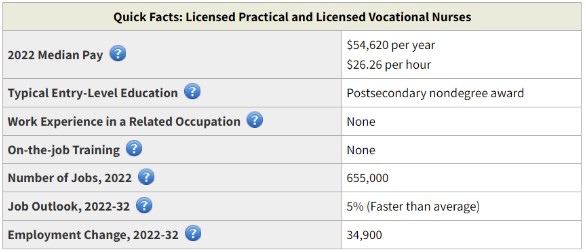The Evolution Of Practical Nursing In The United States
The Evolution of Practical Nursing in the United States
In the heart of the United States, the field of practical nursing has witnessed a remarkable journey over the years.
Picture this: it’s the mid-19th century, a time when Florence Nightingale’s pioneering work in nursing laid the foundation for modern healthcare. Fast forward to the 21st century, and practical nursing has evolved into a dynamic profession, adapting to the ever-changing landscape of healthcare.
Today, over 850,000 licensed practical nurses (LPNs) form the backbone of the American healthcare system, providing direct patient care in hospitals, nursing homes, and countless other settings.
This blog post will delve into the fascinating story of the evolution of practical nursing in the United States, exploring current trends, backed by solid statistics, and peering into the future prospects of this crucial healthcare profession.
Statistically Speaking: A Portrait of Growth
The numbers paint a clear picture of this upward trajectory. According to the Bureau of Labor Statistics, the LPN workforce is projected to grow by 5% between 2022 and 2032, significantly faster than the average for all occupations.

This growth is driven by several factors, including an aging population, an increased demand for chronic care services, and a widening gap between the number of RNs and the overall need for skilled nursing care.
Advancements in Healthcare: New Tools, New Roles
But the story of LPNs isn’t just about numbers. It’s about the evolution of their role within the healthcare ecosystem. Technological advancements have opened doors to new areas of practice.
LPNs now play crucial roles in administering medications, monitoring vital signs, performing basic procedures, and providing essential emotional support to patients.
They are increasingly involved in specialized areas like oncology, cardiac care, and mental health.
Regulatory Landscapes: Evolving Standards, Expanding Scope
The regulatory landscape around LPN practice has also seen significant shifts.
While traditionally focused on providing basic care under the supervision of RNs, many states are now expanding the scope of LPN practice.
This includes granting them greater autonomy in medication administration, wound care, and even certain diagnostic procedures.
These changes reflect the growing recognition of the skills and experience that LPNs bring to the table.
Emerging Roles: Beyond the Bedside
The future of LPNs extends far beyond the traditional bedside setting.
Telehealth is creating new opportunities for remote patient monitoring and consultation.
LPNs are also finding their place in community health initiatives, public education programs, and even research projects.
Their ability to connect with patients on a personal level and bridge the gap between medical expertise and everyday life makes them invaluable assets in these areas.
Challenges and Opportunities: A Maturing Profession
Despite the bright outlook, challenges remain.
Ensuring adequate access to high-quality LPN education and training is crucial. Additionally, advocating for fair compensation and recognizing the increasing complexity of LPN roles will be essential to attracting and retaining talent in this vital field.
But the overall narrative is one of hope and progress. From the battlefield volunteers of the Civil War to the tech-savvy professionals of today, LPNs have come a long way.
As healthcare continues to evolve, their adaptability, dedication, and ever-expanding skill set will ensure that they remain a cornerstone of American healthcare for generations to come.
Are you willing to become a practical nurse in the US? If yes, then PITC Institute brought you a practical nursing program which is going to help you achieve your dreams of becoming an LPN in US healthcare. You can visit the website of PITC Institute and go through the details of their practical nursing program.
